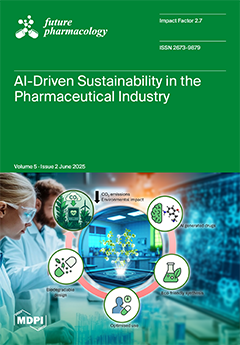Future Pharmacol., Volume 5, Issue 2 (June 2025) – 17 articles
The pharmaceutical industry faces growing pressure to reduce its environmental impact, including a carbon footprint estimated to be 55% higher than that of the automotive industry. Artificial intelligence has emerged as a transformative tool that helps achieve greener pharmaceutical practices throughout the entire drug life cycle. AI-driven models are being explored to personalise dosing, minimise pharmaceutical waste, and speed up the discovery of new, biodegradable drugs. AI is also being used to improve the synthesis of active pharmaceutical compounds by designing new catalysts, enzymes, and solvents. Despite these advances, progress is constrained by limitations such as small datasets, computationally intensive models, and a lack of standardised life cycle assessments that quantify the true environmental benefits of these technologies. View this paper
- Issues are regarded as officially published after their release is announced to the table of contents alert mailing list.
- You may sign up for e-mail alerts to receive table of contents of newly released issues.
- PDF is the official format for papers published in both, html and pdf forms. To view the papers in pdf format, click on the "PDF Full-text" link, and use the free Adobe Reader to open them.




